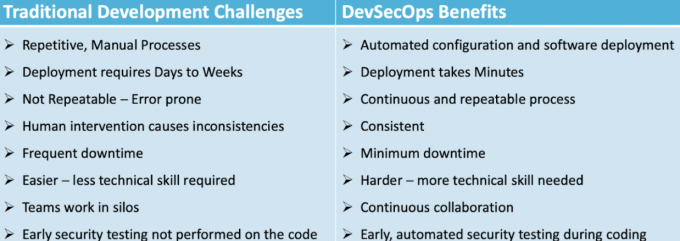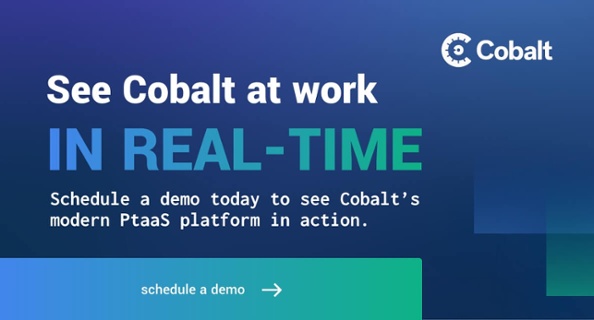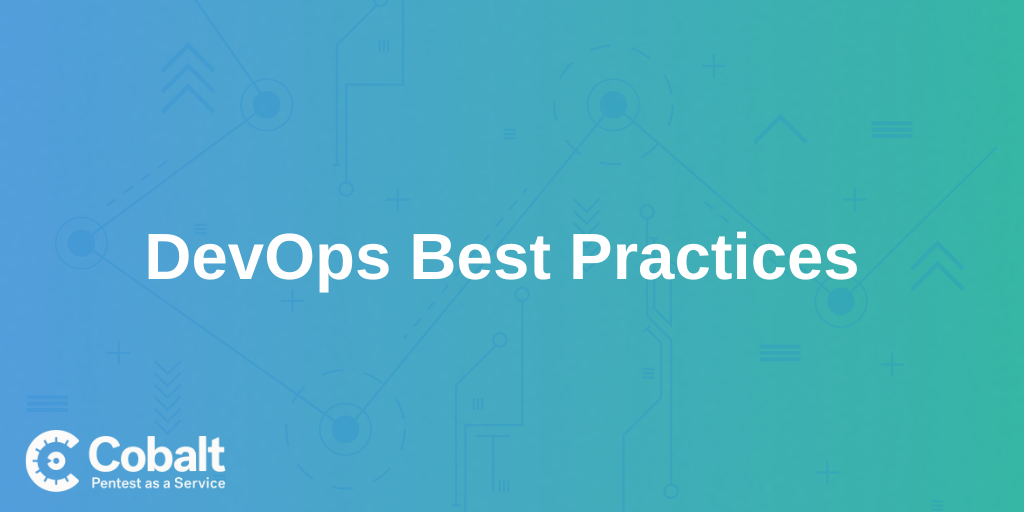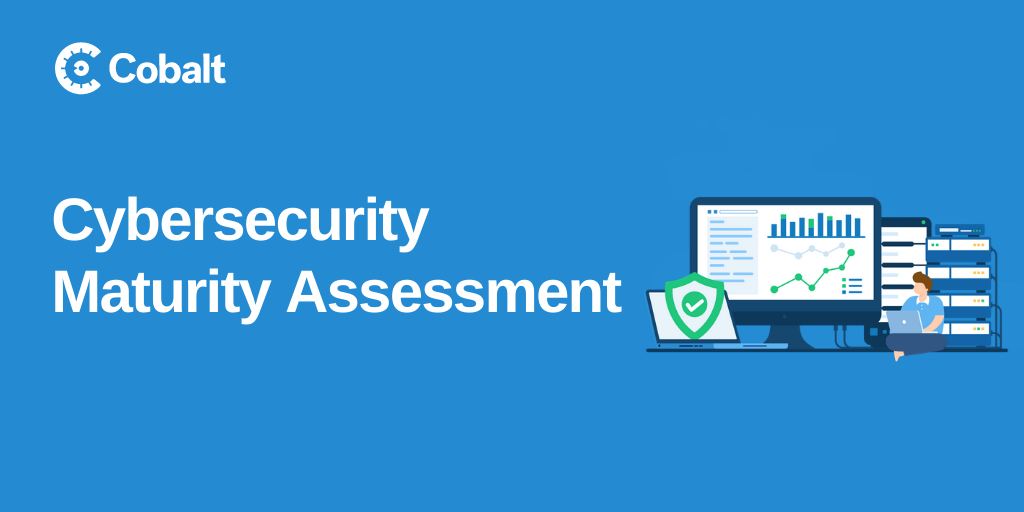‘The ‘Sec’ in DevSecOps can be the Robin to your DevOps Batman — a trusty sidekick providing continuous backup.” - DevSecOps: A Complete Guide to What, Why, and How
The value your organization brings to the table is important, and even more important to keep protected. Now is the time to evolve from DevOps to the modernized DevSecOps approach. DevSecOps takes the principles of DevOps and incorporates a full security-minded approach for developers to follow when creating code.
Before making the DevSecOps transformation, it’s important to understand the aspects and tools that makeup DevSecOps and how it can fit into your organization’s structure. From Pentesting & DevOps: From Gatekeeper to Enabler, “DevOps describes empowered engineering teams taking ownership of how their product performs all the way to production — including security.” Organizations can add significant value by emphasizing security through this modern approach.
A highly functional DevSecOps process is a critical driver of more efficient software delivery. Automation lays the foundation for security end-to-end — emphasizing security in DevOps initiatives and highlighting the need for a built-in security strategy that executes for the long term. DevSecOps seldom looks the same for every organization, so learning the ins and outs of your organization can help lay the groundwork for automation and strategies for success.
The Benefits of DevSecOps
The goal of implementing DevSecOps is in response to traditional security and development challenges, aiming to bridge the gap between IT and security. Both technical and business benefits are seen — with the acceleration of automation and security, it is becoming increasingly more relevant today to take a look at the benefits of DevSecOps and weigh them against the challenges of traditional development:

Image from DevSecOps – Security and Test Automation
Building a DevSecOps Culture - from a Technical Perspective further explains, “DevSecOps provides a number of benefits between Development, Security, and Operations - it eliminates silos, promotes collaboration and teamwork, identifies vulnerabilities early, and provides better, faster delivery … DevSecOps also contributes business value through dollars and resources saved, improved operations, diminished security threats, reduction of re-work and increased quality through automated testing, as well as the delivery of projects / products early and often with less cycle time to the customer.”
The Role of Testers in DevSecOps
Testers play an important role in collecting key metrics that can support an organization’s DevOps strategy and efforts, depending on the overall goals of a team and organization as a whole. Collaboration between engineering, security, and testers is key, and organizations can see the benefits of having testers involved early on in the process — Pentest as a Service (PtaaS) platforms facilitate the collaboration between these teams by providing a common funnel for communication.
“Additionally, developers perform unit tests on their own code before pushing it to the main codebase. On the other hand, QAs actively engage in fixing code when they can,” according to The Role of QA in DevOps. Test teams are also able to get a solid grasp of the entire system to make and suggest any necessary improvements and ultimately make test cases more thorough.
DevSecOps Tools
Selecting the right tools is important for a strong DevSecOps workflow. Most DevSecOps tools are automated in some aspects, making it easier to discover and remediate weaknesses without the processes of manual testing. The OWASP DevSecOps Guideline provides a layout for introducing the best tools to implement a secure pipeline:

Image from OWASP DevSecOps Guideline
Types of Testing in DevSecOps
For your organization to keep up with a secure environment at a quick and efficient pace, DevSecOps tools such as continuous testing and functional testing are key practices for success. DevSecOps testing aims to exploit weaknesses in the current security structure. Here we dive more into information about the types of testing in DevSecOps:
Continuous Testing Continuous Testing refers to a continuous stream of automated testing over intervals each time a code change is implemented. Continuous achievement of quality and improvement, along with feedback in each stage, is at the forefront of continuous testing.
Functional Testing To ensure pieces of code are operating correctly, functional testing focuses on making sure requirements are met and working properly.
Examples of functional testing include:
- Unit testing
- Smoke testing
- Regression testing
- Sanity testing
- Production testing
- API testing
Where to Test in DevSecOps
IDE Typically consisting of a source code editor, build automation tools, and a debugger, Integrated Development Environment (IDE) is an application used to create software. Agreeing on an IDE with security features can help achieve built-in security that aligns with greater business goals.
Scanning Tools: Scanning tools automatically scan for and discover security vulnerabilities, and they can be helpful for tasks like a static code analysis of application source code. When scanners are highly customized to an environment, they work best to search for specific, predefined areas of vulnerability.
Pentesting: Pentesting can fully integrate into a DevSecOps environment, bringing value to engineering teams with different levels of DevOps maturity. Traditional pentesting has been challenging to integrate into DevSecOps because it's too slow and not agile enough. That being said, pentests are still a powerful layer of defense that can catch the vulnerabilities that slip past automated checks.
Pentests excel where chained exploits and business logic issues are found, so to make pentesting work, companies can rethink their approach. A couple of ways to do this are to do smaller pentests more frequently and consider more modern delivery models like Pentest as a Service, which includes:
- On-demand scheduling
- Integrations with issue trackers
- Analytics dashboards
- Collaboration tools
Pentesting works to deliver the highest quality test with the proper scoping, and the first step is defining the right project scope that works for your unique organization.
Pre-release/Regression Pre-release/regression is the process of testing previously developed/tested features to make sure all is running smoothly after a change is made. This takes place before a new version is released.
Static Application Security Testing/Dynamic Analysis Security Testing It’s important to choose the right security automation tool — Static Application Security Testing (SAST) and Dynamic Analysis Security Testing (DAST) are tools used to check for errors and vulnerabilities early in the development process.
Manual Code Review With the collaboration of a team of developers reviewing the entire application, manual code review involves reviewing code line-by-line to check for weaknesses. “This process demands a lot of skills, experience, and patience. The issues or errors identified in this type of review will help enhance the efficiency of the company,” as stated in Manual vs Automated Code Review.
With all of this in mind, learn more about how pentesting and Cobalt’s Pentest as a Service (PtaaS) platform can integrate into your DevSecOps process. Schedule a demo today and unlock the real-time insights you need to remediate and innovate securely.








